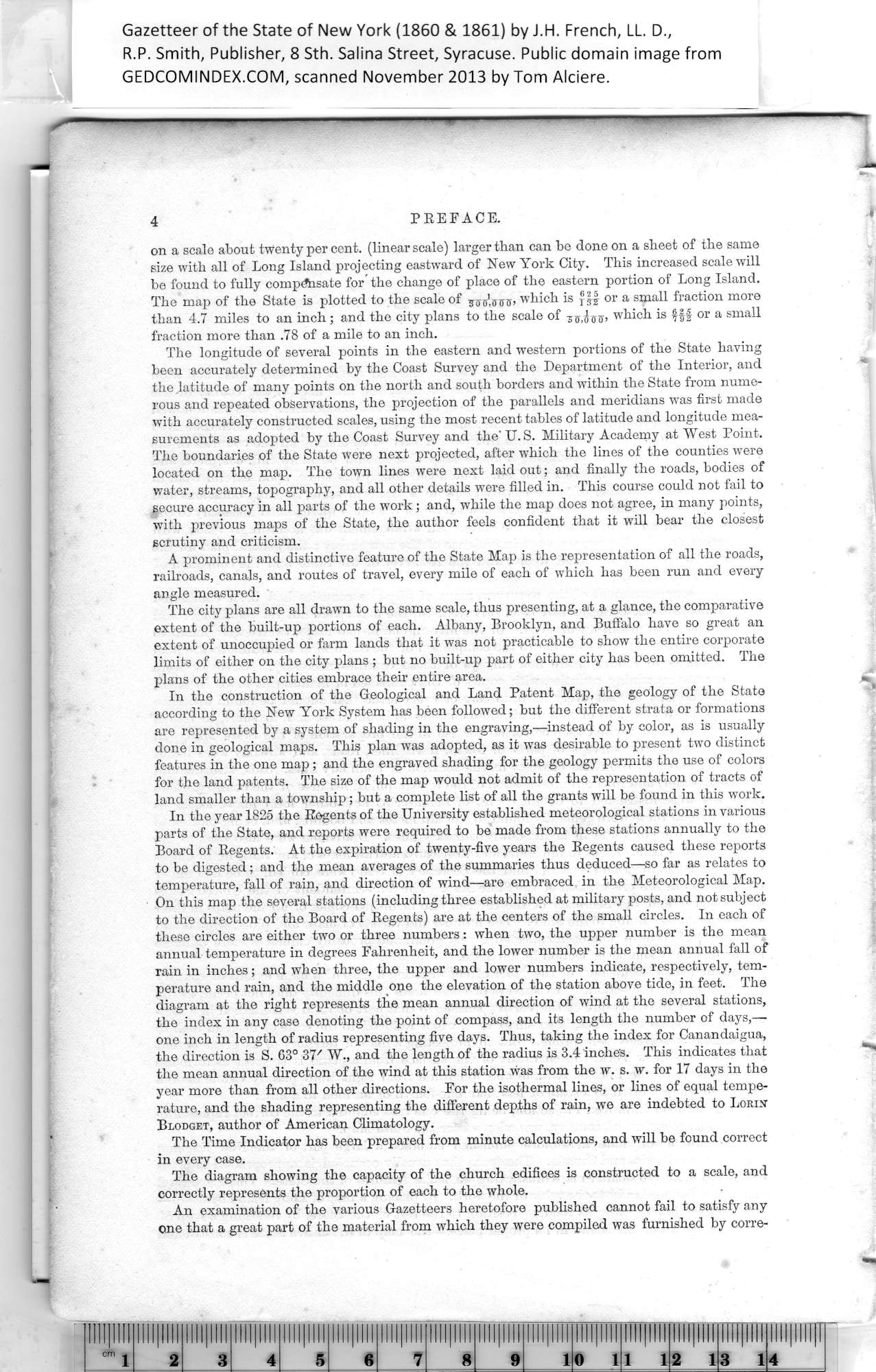|
4 PREFACE. *
on a scale about twenty per cent, (linear scale) larger than can be done on a sheet of the same
size with all of Long Island projecting eastward of New York City. This increased scale will
be found to fully compensate for the change of place of the eastern portion of Long Island.
The map of the State is plotted to the scale of 3$ <^7, which is or a small fraction more
than 4.7 miles to an inch ; and the city plans to the scale of 30,01110 which is fff or a small
fraction more than .78 of a mile to an inch.
The longitude of several points in the eastern and western portions of the State having
been accurately determined by the Coast Survey and the Department of the Interior, and
the latitude of many points on the north and south borders and within the State from nume¬
rous and repeated observations, the projection of the parallels and meridians was first made
with accurately constructed scales, using the most recent tables of latitude and longitude mea¬
surements as adopted by the Coast Survey and the'U.S. Military Academy at West Point.
The boundaries of the State were next projected, after which the lines of the counties were
located on the map. The town lines were next laid out; and finally the roads, bodies of
water, streams, topography, and all other details were filled in. This course could not fail to
secure accuracy in all parts of the work; and, while the map does not agree, in many points,
with previous maps of the State, the author feels confident that it will bear the closest
scrutiny and criticism.
A prominent and distinctive feature of the State Map is the representation of all the roads,
railroads, canals, and routes of travel, every mile of each of which has been run and every
angle measured.
The city plans are all drawn to the same scale, thus presenting, at a glance, the comparative
extent of the built-up portions of each. Albany, Brooklyn, and Buffalo have so great an
extent of unoccupied or farm lands that it was not practicable to show the entire corporate
limits of either on the city plans ; but no built-up part of either city has been omitted. The
plans of the other cities embrace their entire area.
In the construction of the Geological and Land Patent Map, the geology of the State
according to the New York System has been followed; but the different strata or formations
are represented by a system of shading in the engraving,—instead of by color, as is usually
done in geological maps. This plan was adopted, as it was desirable to present two distinct
features in the one map; and the engraved shading for the geology permits the use of colors
for the land patents. The size of the map would not admit of the representation of tracts of
land smaller than a township; but a complete list of all the grants will be found in this work.
In the year 1825 the Regents of the University established meteorological stations in various
parts of the State, and reports were required to be made from these stations annually to the
Board of Regents. At the expiration of twenty-five years the Eegents caused these reports
to be digested; and the mean averages of the summaries thus deduced—so far as relates to
temperature, fall of rain, and direction of wind—are embraced in the Meteorological Map.
On this map the several stations (including three established at military posts, and not subject
to the direction of the Board of Regents) are at the centers of the small circles. In each of
these circles are either two or three numbers: when two, the upper number is the mean
annual temperature in degrees Fahrenheit, and the lower number is the mean annual fall of
rain in inches; and when three, the upper and lower numbers indicate, respectively, tem¬
perature and rain, and the middle one the elevation of the station above tide, in feet. The
diagram at the right represents the mean annual direction of wind at the several stations,
the index in any case denoting the point of compass, and its length the number of days,—
one inch in length of radius representing five days. Thus, taking the index for Canandaigua,
the direction is S. 63° 37/ W., and the length of the radius is 3.4 inches. This indicates that
the mean annual direction of the wind at this station was from the w. s. w. for 17 days in the
year more than from all other directions. For the isothermal lines, or lines of equal tempe¬
rature, and the shading representing the different depths of rain, we are indebted to Lorix
Blodget, author of American Climatology.
The Time Indicator has been prepared from minute calculations, and will be found correct
in every case.
The diagram showing the capacity of the church edifices is constructed to a scale, and
correctly represents the proportion of each to the whole.
An examination of the various Gazetteers heretofore published cannot fail to satisfy any
one that a great part of the material from which they were compiled was furnished by corre-
|
